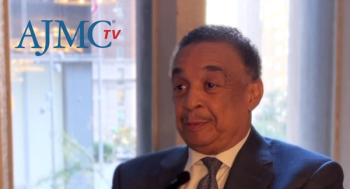
Racing to Contain Ebola After Early Failures
As the Ebola virus continues to spread faster than efforts to contain it, early October brought several milestones in the epidemic: the first diagnosis and death of a patient on American soil,1 the start of screenings in major airports in the United States for potential carriers of the disease,2 and word that a collaboration among pharmaceutical manufacturers, agencies in Britain and the United States, and academia could have a new vaccine to healthcare workers in West Africa by January 2015.3,4
Beyond the headlines, both CDC and World Health Organization (WHO) leaders have admitted that Ebola’s escalation, centered in Liberia, Guinea, and Sierra Leone, represents a failure of the global health community to fully heed multiple warnings, which began with an official notification of the outbreak on March 23, 2014.5,6 In the springtime, the disease Middle Eastern Respiratory Syndrome (MERS) was in the news and on the minds of public health officials (see SP448-SP449), while an early dip in the Ebola caseload caused world health leaders to believe that the outbreak would not be widespread.
Unlike the response to MERS, in which public health response appears to have worked according to plan, early reaction to Ebola by global agencies was painfully slow, a fact that has largely escaped public scrutiny. Far more attention has been paid to the September 25, 2014, decision of a Dallas hospital to send patient Thomas Eric Duncan home from the emergency department, even though he had a high fever and told a nurse he had been in Liberia.1 Duncan returned to the hospital 3 days later, after his symptoms worsened, and was admitted and later diagnosed with Ebola. He died October 8, 2014.1
US public health agencies, led by the CDC, and the military were mobilizing by the time Duncan died, but this came after many weeks of bureaucratic wrangling with WHO over how large a role CDC would play. CDC Director Thomas Frieden, MD, told The Washington Post that when he traveled to the region shortly after WHO declared Ebola a global health emergency on August 8, 2014, it was like “a scene out of Dante.”5
As WHO authors wrote in the New England Journal of Medicine on September 22, 2014—when there were 4507 documented cases—there was nothing about this strain of Ebola that differed from previous outbreaks that peaked at 425 cases.6 They write, “We infer that the present epidemic is exceptionally large, not principally because of the biologic characteristics of the virus, but rather because of the attributes of the affected populations and because control efforts have been insufficient to halt the spread of infection.”6
By “characteristics,” the WHO team and others have noted that this Ebola outbreak has made its way out of remote areas into urban centers, including centers of trade. Containment efforts also have been hampered by poor public health infrastructure, local burial customs that can involve cleansing the body immediately after death, when the viral load is highest,7 and most of all, a reluctance of global health officials to recognize what they faced until the disease had passed a tipping point.8
Joanne Liu, MDCM, FRCPC, of Médecins Sans Frontières, known in the United States as Doctors Without Borders, described her frustrations this way: “Countries are approaching this with the mind-set of going to war—zero risk. Zero casualties.”8 She and other critics of the response say an international community geared up to fight bioterror has overlooked the public health basics, like making sure there are sufficient supplies of rubber gloves, sanitation equipment, food, and proper training for workers.
In her interview with the British Medical Journal, Liu described current military efforts as similar to airstrikes without boots on the ground. “The military are the only body that can be deployed in the numbers needed now and that can organize things fast…You need to send people, not stuff, and get hands on, not try to do this remotely.”8
The Challenge of Containing Ebola
If CDC’s Frieden wanted to alarm the world, he succeeded when he testified October 10, 2014, at the annual meeting of the World Bank and International Monetary Fund, declaring, “We have to work now so this is not the world’s next AIDS.”9
There are similarities to that crisis: like the human immunodeficiency virus (HIV) that causes AIDS, Ebola is not airborne but is transmitted through contract with bodily fluids, such as semen and blood. (Unlike AIDS, it is also transmitted through saliva.) The other similarity is the incubation period: a person carrying the virus can be symptom-free for a week, even up to 21 days, so that when symptoms appear and the patient becomes contagious, he or she may be far removed from the source of infection.
Early symptoms such as a fever, diarrhea, and headaches may resemble other illnesses, so neither patient nor caregivers may realize that Ebola is spreading. But then the disease can take a horrid turn, causing hemorrhaging and multiple organ failure before it claims its victim.5,6
WHO authors reporting in NEJM wrote that the most common symptoms reported in the outbreak through mid-September were: fever (87.1%), fatigue (76.4%), loss of appetite (64.5%), vomiting (67.6%), diarrhea (65.6%), headache (53.4%), and abdominal pain (44.3%). Specific hemorrhagic symptoms were rarely reported (in <1% to 5.7% of patients). “Unexplained bleeding” was reported in 18% of cases.6
Prior outbreaks were ultimately contained by adhering to public health principles of containment—careful tracking of persons with whom patients had been in contact, and requiring isolation for the 21-day incubation period to prevent additional spread of the disease. As deaths from prior outbreaks demonstrate, this is challenging enough when the virus appears in a remote area.
Starting with a case reported in December 2013, the virus appeared in a more developed part of West Africa, including sections that have experienced civil strife and where public health resources were already limited.
And yet, within Liberia, examples of how to contain the disease exist: one report outlined how a “company town” for rubber plant workers, built by Firestone Liberia, treated an infected worker and enforced a quarantine on her family.
Since there was no other place to treat the worker, Firestone officials cleared out a ward in its on-site hospital and had healthcare personnel wear the hazmat suits on hand for chemical spills.10
One of the most vexing challenges with Ebola is providing good patient care without spreading the disease to healthcare workers, and beyond the workers to their families and any other contacts. On October 12, 2014, the CDC confirmed that tests showed a healthcare worker who had cared for Duncan had contracted Ebola;11 earlier in 2014, news reports were filled with images of Kent Brantly, MD, returning to be treated at Atlanta’s Emory University after contracting the disease while caring for patients in Liberia.5
According the NEJM report from WHO, fatality rates for healthcare workers who contract the disease are 56%. While this is not as high as overall fatality rates, which exceed 70% in West Africa,6 the rate nonetheless has made recruiting, training, and retaining new healthcare workers a daunting task. A separate report found that 250 healthcare workers had contracted Ebola, and that at least 120 had died.12 As The Washington Post reported, many Liberian healthcare workers simply refused to go in Ebola wards, although at press time there were reports that volunteers from overseas were starting to fill the gaps.5
How did the current outbreak get so out of hand? The WHO paper and Frieden’s testimony suggest that both the specifics of how the disease spread in 2014, coupled with a long-term neglect of public health investment, created the perfect fuel for the Ebola wildfire. Indeed, during the time when Ebola was taking hold in West Africa, CDC was preoccupied with a controversy over its handling of smallpox vaccine.
At press time, deaths from Ebola had far exceeded 4000, and rates of infection were climbing faster than the healthcare system’s ability to contain the virus. The WHO authors’ projections were grim: “Assuming no change in the control measures for this epidemic, by November 2, 2014, the cumulative reported numbers of confirmed and probable cases are predicted to be 5740 in Guinea, 9890 in Liberia, and 5000 in Sierra Leone, exceeding 20,000 in total.”6
In his testimony to the World Bank, Frieden decried not only the suffering and loss of life, but waste of economic output due to Ebola and the resources that will be needed to stop the disease, when it did not need to be this way. “This is controllable, and this was preventable,” he said. “It’s preventable by investing in core public health services, in the epicenter (of) the most affected countries, in surrounding countries, and other countries that might be affected.”9
“Public health is sorely underinvested in, and yet, it is a best buy,” Frieden continued. He noted World Bank figures that estimate that the cost of Ebola to West Africa will be $33 billion in lost gross domestic product in 2014 and 2015,13 and said the public health investments that would have prevented such losses would have been 1% of that amount.9
After Dallas Patient, Alarm in United States
The report of the Duncan case, and the subsequent report of the positive test for a healthcare worker who treated him, set off waves of alarm. Frieden attributed the worker’s infection to a “protocol breach,” and said that while there are ways to safely treat Ebola patients, it can be quite hard to follow them perfectly, especially when removing clothing exposed to the virus.11 At press time, Frieden had apologized for these remarks to the nurses who have become infected.
Public reaction to the outbreak has been intense, if predictable. Time magazine reported that 10.5 million tweets with the word “Ebola” were sent from 170 countries between September 16 and October 6, 2014, and at a rate of 6000 per minute October 1, 2014, the day Duncan’s case was reported.14
An August article in Annals in Internal Medicine notes that health workers’ exposure to Ebola can occur before the patient knows he or she is infected, making it essential that healthcare workers not only have personal protective equipment available, but also that they are well-schooled in the routines for putting it on and taking it off, as Frieden referenced.15 The CDC director promised an investigation into how the protocol breach occurred, as well as ongoing monitoring of other healthcare workers.11 However, now that Ebola has affected United States hospital workers, response may rapidly progress from a public health issue to a political one. Frieden’s statement on the Texas healthcare worker came not just as a CDC release, but also from a guest chair on the Sunday morning talk show, CBS’ “Face the Nation.” The program also featured an interview with US House Homeland Security chairman Mike McCaul, R-TX.16
The New Yorker article, “The Nightmarish Politics of Ebola,” warns that Frieden’s measured statements may be drowned out in the cacophony of public sentiment, which include some less-than-humane ideas for containing the virus. As writer John Cassidy notes, some will be tempted to tap into public fears as 2014 midterm elections approach.17
“Political correctness” was governing the CDC response, said US Senator Rand Paul, R-Ky, and an opthalmologist. He told a radio host, “Can you imagine if a whole ship of our sailors get Ebola?”18
Newsletter
Stay ahead of policy, cost, and value—subscribe to AJMC for expert insights at the intersection of clinical care and health economics.

















































